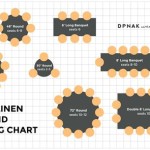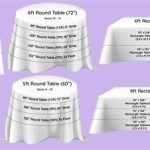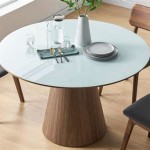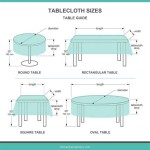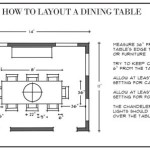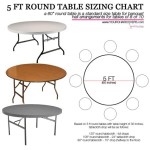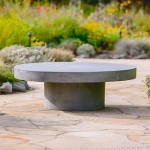Who Normally Sits At The Head Table At A Wedding
The head table at a wedding reception, also sometimes referred to as the bridal table or the wedding party table, is a focal point of the celebration. Determining who sits at this prominent location is a decision that requires careful consideration of tradition, family dynamics, and the couple's personal preferences. While there are conventional practices, there is also room for flexibility to accommodate unique family situations and to ensure that the seating arrangement reflects the couple's values and relationships. Understanding these conventions and options is essential for planning a wedding reception that is both elegant and inclusive.
The purpose of the head table is multifaceted. Firstly, it serves to honor those closest to the couple, acknowledging their support and involvement in the wedding festivities. Secondly, it provides a centralized location for the wedding party to gather and enjoy the reception, facilitating interaction and camaraderie. Thirdly, it visually reinforces the importance of the wedding party in the couple's lives, demonstrating their commitment to these relationships publicly. The arrangement of the head table is often designed to ensure the couple is centrally positioned, emphasizing their role as the hosts and the focus of the celebration.
Traditional Head Table Composition
The most traditional arrangement of the head table typically includes the bride and groom, their respective attendants (bridesmaids and groomsmen), and often the maid of honor and best man. The specific configuration can vary depending on the size of the wedding party. A larger wedding party might necessitate a longer table or even multiple tables, while a smaller party might allow for a more intimate setting. The bride and groom are usually seated in the center of the table, providing a clear focal point. Traditionally, the maid of honor sits to the groom's right and the best man sits to the bride's left. The remaining bridesmaids and groomsmen are then seated alternating sides, progressing outwards from the center.
Historically, the head table also included the parents of the bride and groom. However, it has become increasingly common to seat the parents at separate tables with other family members or close friends. This change reflects a shift towards prioritizing the wedding party and acknowledging the evolving dynamics of modern families. Seating parents at their own tables allows them to host their own guests and engage in conversations with those they know well, rather than being confined to a singular table with limited interaction outside of the immediate wedding party.
The inclusion of spouses or significant others of the wedding party members is another area where traditions have evolved. In the past, it was common for these individuals to be seated at separate tables. However, contemporary etiquette often suggests including them at the head table, particularly if they know other members of the wedding party well. This gesture of inclusion can contribute to a more relaxed and enjoyable atmosphere for all involved. If space limitations prevent seating all spouses at the head table, it is important to ensure they are seated at a table nearby with other guests they would find comfortable and engaging.
Alternative Seating Arrangements: The Sweetheart Table and King's Table
Recognizing the evolving nature of wedding traditions, alternative seating arrangements have gained popularity. One such alternative is the sweetheart table, which features only the bride and groom. This arrangement allows the couple to enjoy a private space and focus on each other during the reception. It is particularly suitable for couples who prefer a more intimate setting or who have complex family dynamics that make a traditional head table challenging to navigate. The sweetheart table can be decorated to complement the overall wedding theme and can serve as a visually stunning focal point.
Another alternative is the King's Table, which is a long table typically occupied by the bride, groom, and their immediate families. This arrangement can create a sense of unity and cohesion, particularly if the families are close. The King's Table often includes the parents, siblings, and grandparents of the bride and groom, fostering a familial atmosphere and allowing for more intimate conversations. This arrangement can be particularly appealing for smaller weddings or for couples who prioritize family involvement.
The choice between a traditional head table, a sweetheart table, or a King's Table depends on the couple's individual preferences, family dynamics, and the overall style of the wedding. There is no right or wrong answer, and the best approach is to select an arrangement that feels comfortable and authentic to the couple.
Considerations for Blended Families and Complex Relationships
In modern society, many couples come from blended families or have complex relationship dynamics. These situations often require careful consideration when planning the head table seating arrangement. It is crucial to prioritize inclusivity and to avoid creating any sense of exclusion or favoritism. Open communication with all family members is essential to ensure that everyone feels respected and valued.
When dealing with divorced parents, it is generally advisable to seat each parent at a separate table with their own guests. This arrangement minimizes potential discomfort and allows each parent to enjoy the reception without feeling awkward or uncomfortable. The couple can also consider creating a seating chart that strategically places the divorced parents at tables that are not directly adjacent to each other. The focus should be on creating a harmonious and respectful environment for all involved.
The presence of stepparents can also complicate the seating arrangement. If the stepparent has a close relationship with the bride or groom, it may be appropriate to include them at the head table or the King's Table. However, if the relationship is strained or nonexistent, it may be more appropriate to seat the stepparent at a separate table with other family members or friends. The decision should be made based on the individual circumstances and the potential impact on the overall atmosphere of the reception.
Ultimately, the goal is to create a seating arrangement that is comfortable and inclusive for all family members, regardless of their relationship status. Open communication, sensitivity, and a willingness to compromise are essential for navigating these complex situations successfully. The couple should prioritize creating a positive and celebratory atmosphere that reflects their love and commitment to each other.
In addition to family considerations, the couple should also consider the preferences and personalities of their wedding party members. Some bridesmaids and groomsmen may feel more comfortable seated with their spouses or significant others, while others may prefer to sit at the head table and engage in conversations with their fellow wedding party members. Open communication with the wedding party can help the couple determine the best seating arrangement for everyone involved.

How To Seat The Bridal Table At Your Reception With Graphs Queensland Brides

The Wedding Top Table Layout

Wedding Head Table Seating Who Gets A Spot

Wedding Head Table Seating Who Gets A Spot

Wedding Head Table Seating Who Gets A Spot

Who Sits At The Head Table During A Wedding Reception
:max_bytes(150000):strip_icc()/head-table-wedding-facebook-09-12-5b86794bf646412583289481e13e8dd1.jpg?strip=all)
Who Sits At The Head Table A Wedding Reception

Wedding Head Table Seating Who Gets A Spot

Wedding Ceremony Seating Who Sits Where And When

Who Sits At The Head Table A Reception
Related Posts

